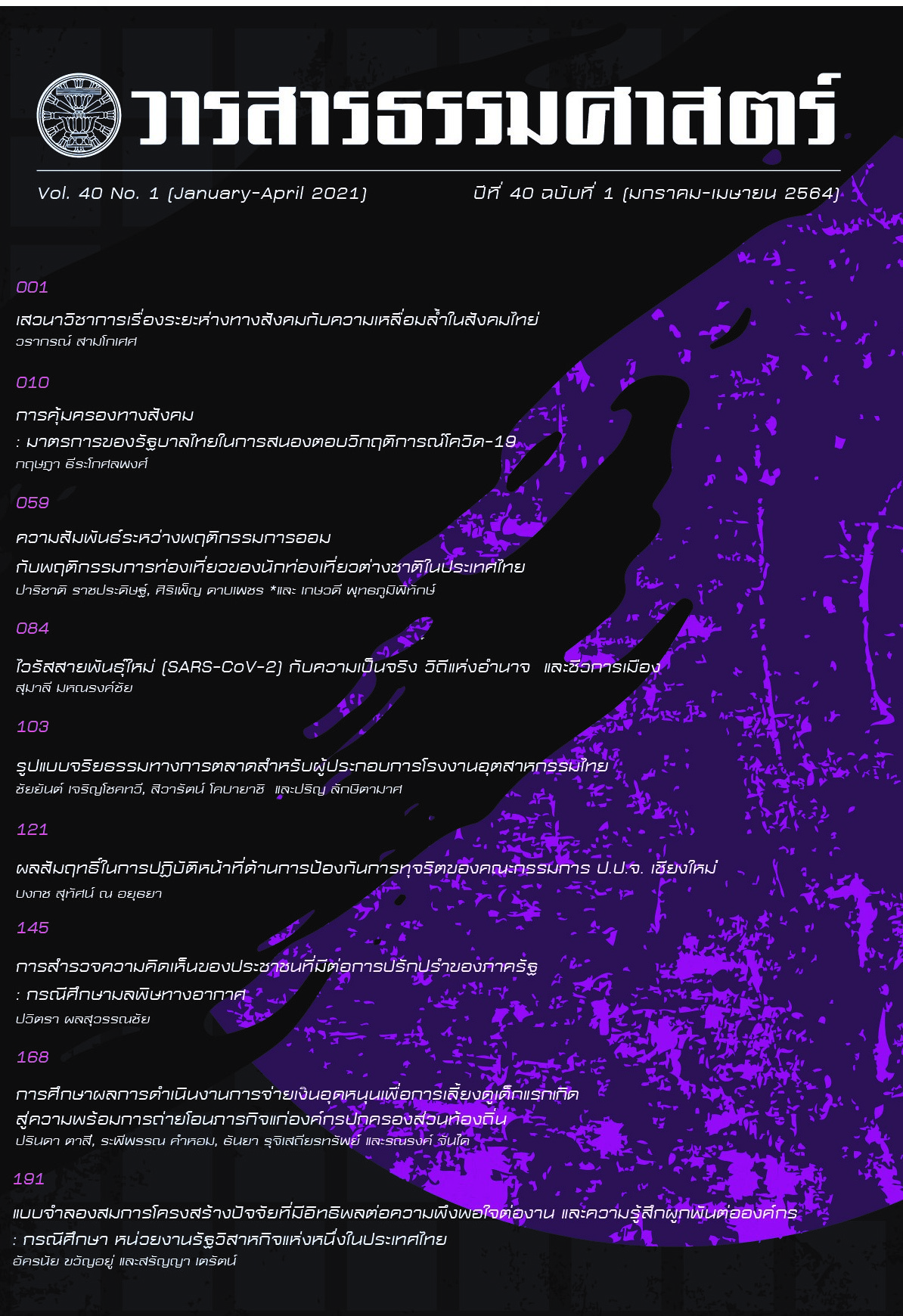Structural Equation Model of Variables Affecting Employee Satisfaction and Engagement to Organization: Evidence from the One State Enterprise Agency in Thailand
Main Article Content
Abstract
This research’s objective is to study factors influencing employee satisfaction and engagement to organization of employees in one of a state enterprise agency in Thailand. The structure equation model (SEM) was used to use the study results in understanding opinions of employees to the organization. The policy proposition was made so that the organization could increase the ability of organizational competition effectively. From the study, it was found that the factors created positive impact to the satisfaction and bond to the organization included organizations structure variable factor, work characteristic factor and positive attitude in working whereas work stress factor created negative impact to the satisfaction and bond with statistical at the level of 0.05. In order to allow the organization to increase the satisfaction and the bond of the employees, there must be a strategy in the management and administration in both the short term and in the long run. Short-term strategies included increasing of satisfaction on the point of leadership in managing work stress and created work positive attitude and the management and administration so that the organization would have efficiency. Long term strategies included increasing of satisfaction of returns and welfare, having plans for
promoting good relationship of colleagues, promoting, and supporting communication inside organization and increasing power to employees in the work.
Article Details
References
Bakker, A. B. & Bal, P.M. (2010). Weekly Work Engagement and Performance: A Study among Starting Teachers. Journal of Occupational and Organizational Psychology, 83(1), 189-206.
Bakker, A. B. (2011). An Evidence-bases Model of Work Engagement. Current directions in Psychological Science, 20(4), 265-269.
Bakker, A. B., & Demerouti, E. (2007). The Job Demands-Resources Model: State of the Art. Journal of Managerial Psychology, 22, 309-328.
Chandani, A., Mehta, M., Mall, A., & Hokhar, V. (2016). Employee Engagement: A review Paper on Factors Affecting Employee Engagement. Indian Journal of Science and Technology, 9(15), 1-7.
Lesener, T., Gusy, B., & Wolter, C. (2019). The Job Demands-Resources Model: A Meta-Analytic Review of Longitudinal Studies. Work & Stress, 33(1), 76-103. Li Sun. (2019). Employee Engagement: A Literature Review. International Journal of Human Resource Studies, 9(1), 63-80.
Macey, W. H. & Schneider, B. (2008). The Meaning of Employee Engagement. Industrial and Organizational Psychology, 1(1), 3-30
May, D. R., Gilson, R. L., & Harter, L. M. (2004). The Psychological Condition of Meaningfulness, Safety and availability and the Engagement of the Human Spirit at Work. Journal of Occupational and Organizational Psychology, 77(1), 11-37.
Mishra, N. & Thakur, P. (2014). A Research Paper on the Effect of Employee Engagement on Job Satisfaction in IT Sector. Journal of Business Management & Social Science Research, 3(5), 31-39.
Saks, A. (2006). Antecedents and Consequences of Employee Engagement. Journal of Managerial Psychology, 21(7), 600-619.
Wellins, R. & Concelman, K. (2005). Creating a Culture for Engagement. Workforce Performance Solution, 4, 1-5.
Weston, R., & Gore, P. A. (2006). A Brief Guide to Structural Equation Modeling. The Counseling Psychologist, 751-719.
Xiao, M. L. & Duan, L. (2014). Job Engagement of Employees in State- Owned Enterprises: Construct Clarification and Scale Development. Organizational Management, 1, 35-41.

